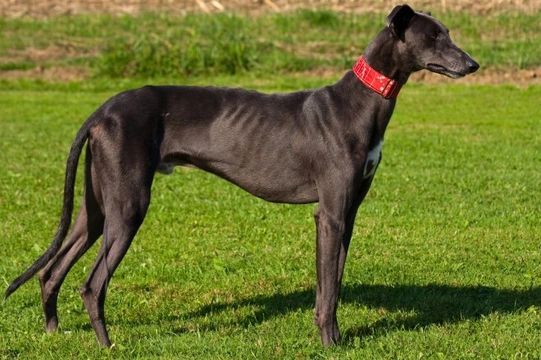
Four large dog breeds with long lifespans
It is an unfortunate fact that large and giant breeds of dog tend to live shorter lifespans than their smaller counterparts, and for some breeds, their average lifespan can be as low as just seven or eight years. However, there are a few breeds of larger dog that buck this trend, and tend to live for much longer than other large breeds, and in some cases, outlive even most smaller dogs too!
Buying a dog because of their breed is no guarantee of long term health and a long life, and there are also a whole range of other factors to take into account too, such as the hereditary health of the breed line, how you care for your dog, and if they become sick or injured at some point in their lives.
However, to get a head start, in this article we will examine four large breeds of dogs that have a particularly long lifespan on average.
Alaskan malamute
The Alaskan malamute is a large Arctic dog breed that hails from Alaska, and is renowned for its endurance, strength and general hardiness. They are still widely used in their home country for working roles including sledding and hauling freight, but are also now popular all across the world as they have become ever more widely exported.
Their average lifespan runs up to around 15 years, which is much higher than the average for all breeds in total, being 12, and significantly higher than that of most breeds of a similar size and build.
However, the Alaskan malamute can be a challenging dog to keep, as they require a very high level of exercise and entertainment, as well as a strong, confident and experienced handler to keep them under control.
Doberman pinscher
The Doberman pinscher is a very versatile breed with Germanic origins, and one that is still widely used within a whole range of working roles. They are ranked in the top ten list of dog intelligence by breed, and are tenacious, persistent and hardworking, and can commonly be seen used for roles such as police work, property guarding and personal protection. They are eminently trainable, very loyal and keen to please, and capable of executing a wide range of complex and higher level commands. They require an experienced trainer, sufficient exercise and good management, but they also make for excellent family pets.
The Doberman pinscher’s average lifespan is reported to be around 14 years, but it is not at all uncommon for dogs of the breed to live into their late teens either.
Greyhound
The greyhound is a relatively common pet within the UK, and a large number of the pet greyhounds that you may see out and about on walks are likely to be ex racing dogs that have been rehomed after their racing career has come to an end. Tall, lithe and leggy, the greyhound is of course most famous for their high speed running gait, but they are actually fairly sedentary dogs that are apt to display a short burst of very high speed, and then spend the rest of the day on the sofa catching up on their sleep!
Exact figures on the average longevity of the greyhound can be hard to come by, as the majority of racing greyhounds are imported or non-pedigree, and so are not reflected fully within the breed’s statistics. Added to this, injuries and traumas sustained while racing, and the lifestyle in a racing kennels can also potentially have a negative effect on the lifelong health and wellbeing of the dog.
However, greyhounds as a whole generally live past 12 years of age, which is higher than most large breeds of dog.
Siberian husky
The Siberian husky is a large, active breed of dog that has one of the highest exercise requirements of any breed, and which needs to spend several hours every day on the move, being walked, running around and playing! The Siberian husky can be a challenge to own, as they are prone to escaping and running off, and are also very personable and keen to make friends with everyone!
In order to keep the Siberian husky fit and well into old age, getting the balance right between their diet and exercise, and ensuring that they get enough exercise is vital, as otherwise the dog will not thrive, and will tend to be unhappy.
The average lifespan of the Siberian husky is 12-14 years, with many dogs of the breed coming in at the top end of the range and even higher.
Helping your dog to live longer
Regardless of the breed of dog that you own, there are steps that you as the owner can take to help to support a long and healthy life. Feeding an age-appropriate good quality diet is one of these, and also ensuring that your dog stays fit and does not run to fat is important. Scheduling regular vet checks and vaccinations is also important, as it getting your dog checked out if you begin to suspect that something is amiss with them.



